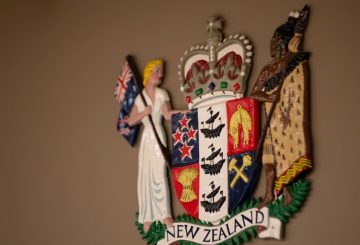流星とも呼ばれる流れ星は、一年中いつでも見ることができます。ただし、これらの天体現象を見るのには、他の夜よりも良い夜もあります。地球が太陽の周りを回るとき、彗星や小惑星からの塵や破片の流れの中を通過します。この破片は、空に見える流れ星の数が劇的に増える「流星群」を引き起こします。
今、私たちはハレー彗星が残した土石流の周辺を移動しています。これにより、特に南半球から見えるイータみずがめ座流星群ができあがります。毎年、地球が軌道上のこの地点に達すると、朝空にイータみずがめ座が見られます。
今年の展示は格別なものになると予想されています。にわか雨のピークは新月と重なるため、夜明けの数時間前には空が非常に暗くなります。有名な彗星の破片が落ちるのを見るのに最適です。また、シャワーがいつもより「アクティブ」になるかもしれないというヒントもあります。
ハレー彗星は、正式には1P/Halleyと名付けられ、76年ごとに太陽の周りを回り、何千年もの間現在の軌道を歩んできました。彗星は太陽系の内側を通過するたびに、塵とガスを放出します。この塵は宇宙空間に広がり、彗星の軌道に沿って広いデブリフィールドを作ります。
地球はこの破片を年に2回通過し、その結果、よく知られている2つの流星群が発生します。10月には、両半球から見えるオリオン座流星群が見られます。しかし、2つのうち良い方の、みずがめ座イータ流星群は、5月上旬にピークを迎えます。
イータみずがめ座流星群は、一年で最も美しい流星群のひとつですが、南半球から最もよく見ることができ、赤道の北側からは観測が難しいため、あまり知られていません。
南半球の人々にとって、イータみずがめ座流星群を観察するのに最適な時期は、夜明けの数時間前、つまり流星が発生しているように見える放射が空の高いところにあるときです。空で放射が上昇するにつれて、目に見える流星の数が増えます。
今年のみずがめ座流星群は特に特別なものになると予想されます。新月のせいで空が暗くなり、流星が見つけやすくなるだけでなく、科学者たちは、今年は例年よりもはるかに多くの流星が見られると信じています。実際、2024年のみずがめ座流星群は、21世紀全体で最も強い流星群である可能性があると示唆する人もいます。
流星群の活動を予測することは難しく、今年は「平常通り」かもしれないと考える研究者もいます。いずれにせよ、天候は完璧で、ピークは5月6日の朝です。美しい秋の日の出を見る前に、週末に田舎への旅行を計画して自然の花火大会を楽しむ絶好の機会です。





























































